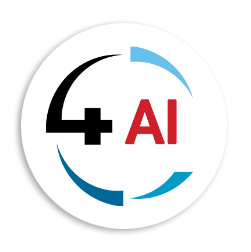Blog
Empowering Healthcare with Azure Virtual Desktops

Timely access to patient data and seamless workflows are critical for delivering quality care. Healthcare providers rely on secure, resilient, and scalable technology solutions to ensure that patient information is accessible only to authorized personnel while maintaining compliance with stringent regulations. Traditional Virtual Desktop Infrastructure (VDI) has long been a cornerstone of healthcare IT, but cloud-based solutions like Azure Virtual Desktop (AVD) and Windows 365 are revolutionizing the way healthcare organizations manage their digital environments.
The Importance of Secure and Resilient Healthcare Technology
Healthcare providers handle sensitive patient data daily, making security and system reliability non-negotiable. Key challenges include:
- Data Security: Protecting electronic health records (EHRs) from breaches.
- Accessibility: Ensuring clinicians can access critical applications from anywhere.
- Uptime: Minimizing downtime to avoid disruptions in patient care.
Traditional VDI solutions have addressed some of these needs, but cloud-based alternatives like AVD and Windows 365 offer enhanced scalability, ease of management, and advanced security features.
Azure Virtual Desktop: A Secure and Flexible Solution for Healthcare
What is Azure Virtual Desktop?
Azure Virtual Desktop (AVD) is a cloud-based desktop and app virtualization service that allows healthcare organizations to deploy and manage virtualized environments securely. It provides:
- Remote access to clinical and productivity applications from any device.
- Centralized management via the Microsoft Azure portal.
- Cost savings by reducing the need for on-premises hardware.
Key Features and Benefits for Healthcare
Integration with Epic EHR
o Microsoft collaborates with Epic to run Epic Hyperdrive on AVD, enabling seamless EHR access for early adopters.
o A draft reference architecture based on pilot feedback ensures best practices for deployment.
Enhanced Security with Imprivata
o Imprivata’s "Tap and Go" badging now supports AVD on Windows endpoints (expanding from Linux), streamlining secure access for healthcare workers.
Recent Updates
o Microsoft Intune Remote Help: Now supports multi-session AVD, aiding IT admins in managing shared environments.
o Azure Local (formerly Azure Stack HCI): Enables session hosts closer to users, ideal for areas with poor cloud connectivity.
o Dynamic autoscaling and Mobile Application Management (MAM): Optimizes performance and security for mobile clinicians.
Use Cases in Healthcare
o Clinicians accessing EHRs across multiple facilities.
o Remote specialists reviewing patient records securely.
o IT teams managing virtualized apps with minimal downtime.
Windows 365: Simplicity and Scalability for Healthcare Teams
What is Windows 365?
Windows 365 is a Cloud PC service that provides personalized, secure Windows desktops accessible from any device. Unlike traditional VDI, it requires minimal IT expertise and offers:
- Predictable pricing with per-user licensing.
- Easy deployment via Microsoft Intune.
- Persistent user profiles, retaining apps, data, and settings.
Key Features and Benefits for Healthcare
Frontline Worker Solutions
o Windows 365 Frontline allows shared Cloud PCs for shift workers (e.g., nurses, call-center staff).
- Dedicated mode: Three users share one license with personalized desktops.
- Shared mode: Non-personalized desktops for intermittent use.
Disaster Recovery Enhancements
o Windows 365 Disaster Recovery Plus: Ensures rapid recovery in alternate regions, critical for healthcare compliance.
Common Healthcare Use Cases
o Pharmacy and life sciences teams accessing research tools.
o Administrative staff working remotely.
o Seasonal contractors requiring temporary access.
Economic Impact and Productivity Gains
A 2025 Forrester Consulting study commissioned by Microsoft highlights the financial and operational benefits of AVD and Windows 365:
- ROI of 94%–217% over three years.
- Net Present Value (NPV) of 3.2M–3.2M–7.4M for a 2,000-employee organization.
- 6–12 minutes saved daily per employee due to reduced outages/latency.
These gains translate to:
- Faster decision-making for clinicians.
- Lower IT costs through streamlined management.
- Scalability for growing healthcare demands.
Getting Started with Microsoft’s Cloud Solutions
Next Steps for Healthcare Organizations
1. Evaluate Needs: Choose AVD for customization or Windows 365 for simplicity.
2. Pilot Programs: Test Epic Hyperdrive on AVD or Windows 365 Frontline.
3. Reach out to your Surestep Ambassador: Engage with our team to further explore solutions for your Healthcare customer.
Azure Virtual Desktop and Windows 365 are transforming healthcare IT by combining security, scalability, and cost efficiency. Whether enabling remote EHR access, supporting frontline workers, or ensuring disaster recovery, these solutions empower healthcare organizations to focus on what matters most: patient care.
By adopting cloud-based virtual desktops, healthcare providers can future-proof their operations, reduce overhead, and deliver seamless care.
Ready to Get Started?
Please contact your Surestep Ambassador team at This email address is being protected from spambots. You need JavaScript enabled to view it. to assist you with possible leads or opportunities that you might have in the healthcare sector.


